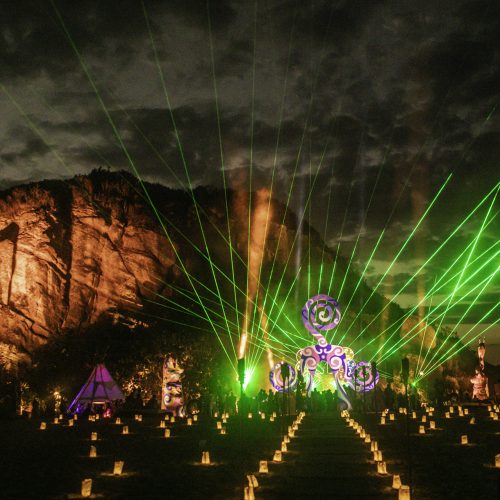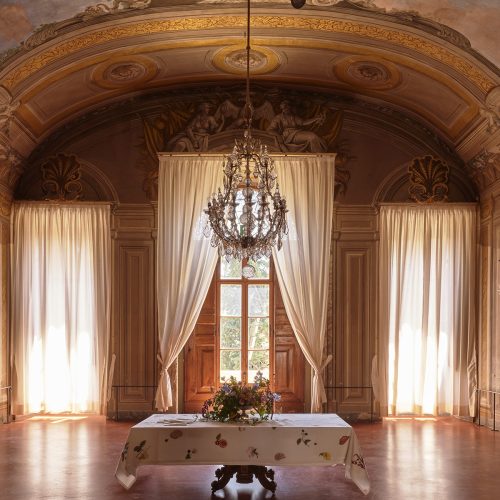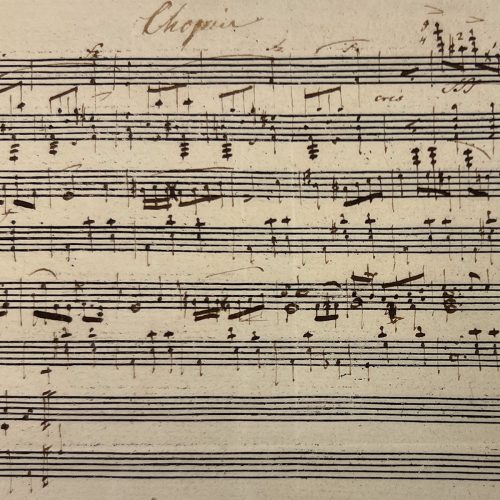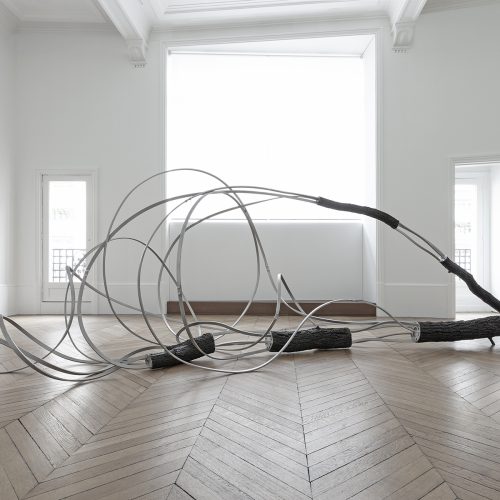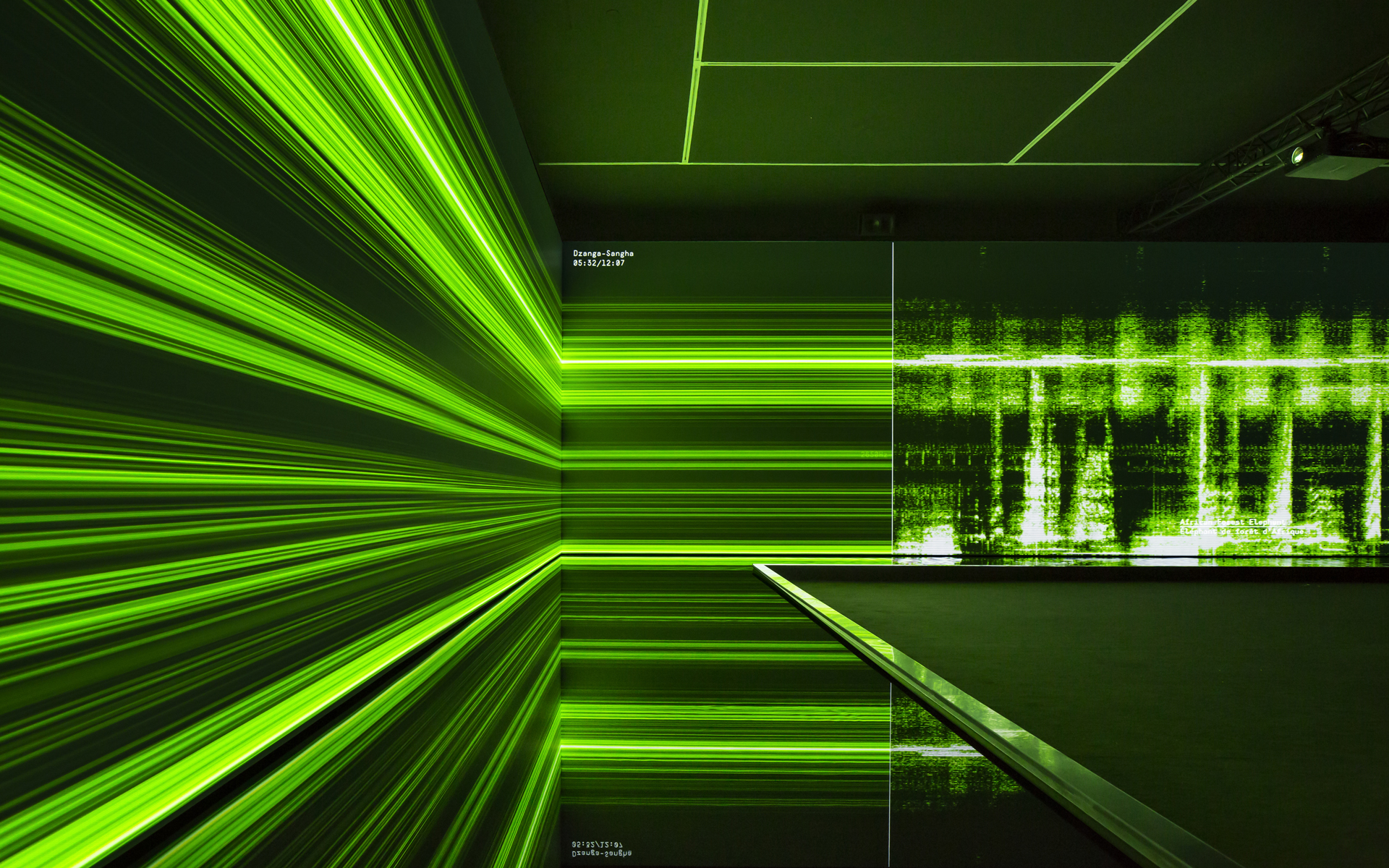

An Immersive Animal Soundscape Arrives at the Exploratorium in San Francisco
Dubbed the Musician of Nature, Bernie Krause worked with United Visual Artists to turn his recordings into a plea for the environment
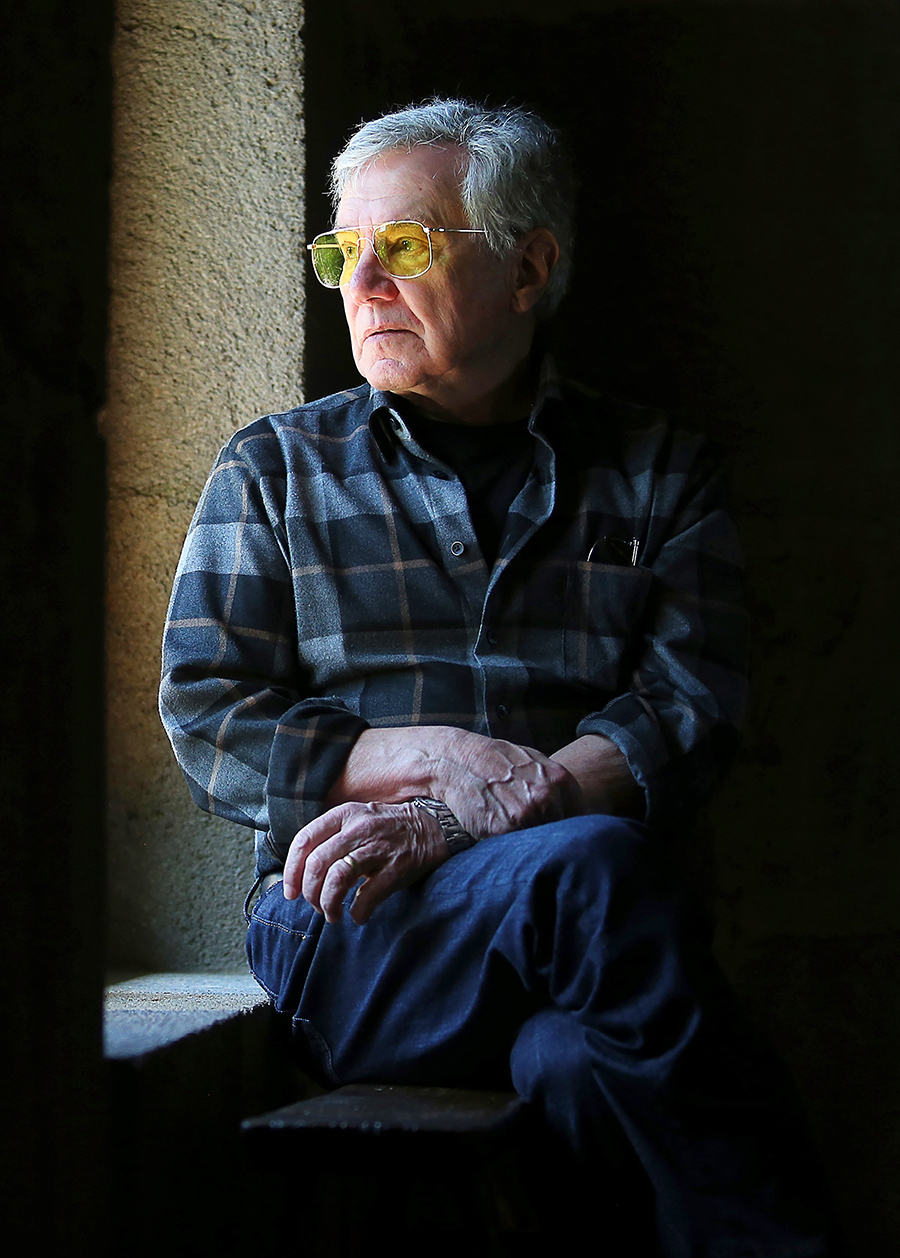
Bernie Krause. Photo: Chris Chung, ©2021 Wild Sanctuary. All Rights Reserved
For more than 50 years, Bernie Krause has traveled the world immersing himself in the ever-changing sounds of wildlife, recording some 5,000 hours of audio from 15,000 species on six continents. “I like to be in the field because it makes me feel good,” says the soundscape ecologist, who usually arrives at each wild locale at dawn in order to find where it is most expressive in regard to animal life. “I set up my mics in a place where I feel I’m going to get a good impression of that habitat. It’s an artistic decision every time.”
That extensive body of work culminated a decade ago with the publication of his acclaimed book, The Great Animal Orchestra, an illuminating guide to the Earth’s natural symphony informed by his background as a musician. In 2016, it became an immersive exhibition under the same name, commissioned by the Fondation Cartier pour l’art contemporain in Paris and presented in a hypnotic installation designed in collaboration with London-based studio United Visual Artists. Since then, approximately 1.5 million visitors have experienced the show as it’s traveled to various institutions around the world, including a recent stint at the Peabody Essex Museum in Salem, Massachusetts.
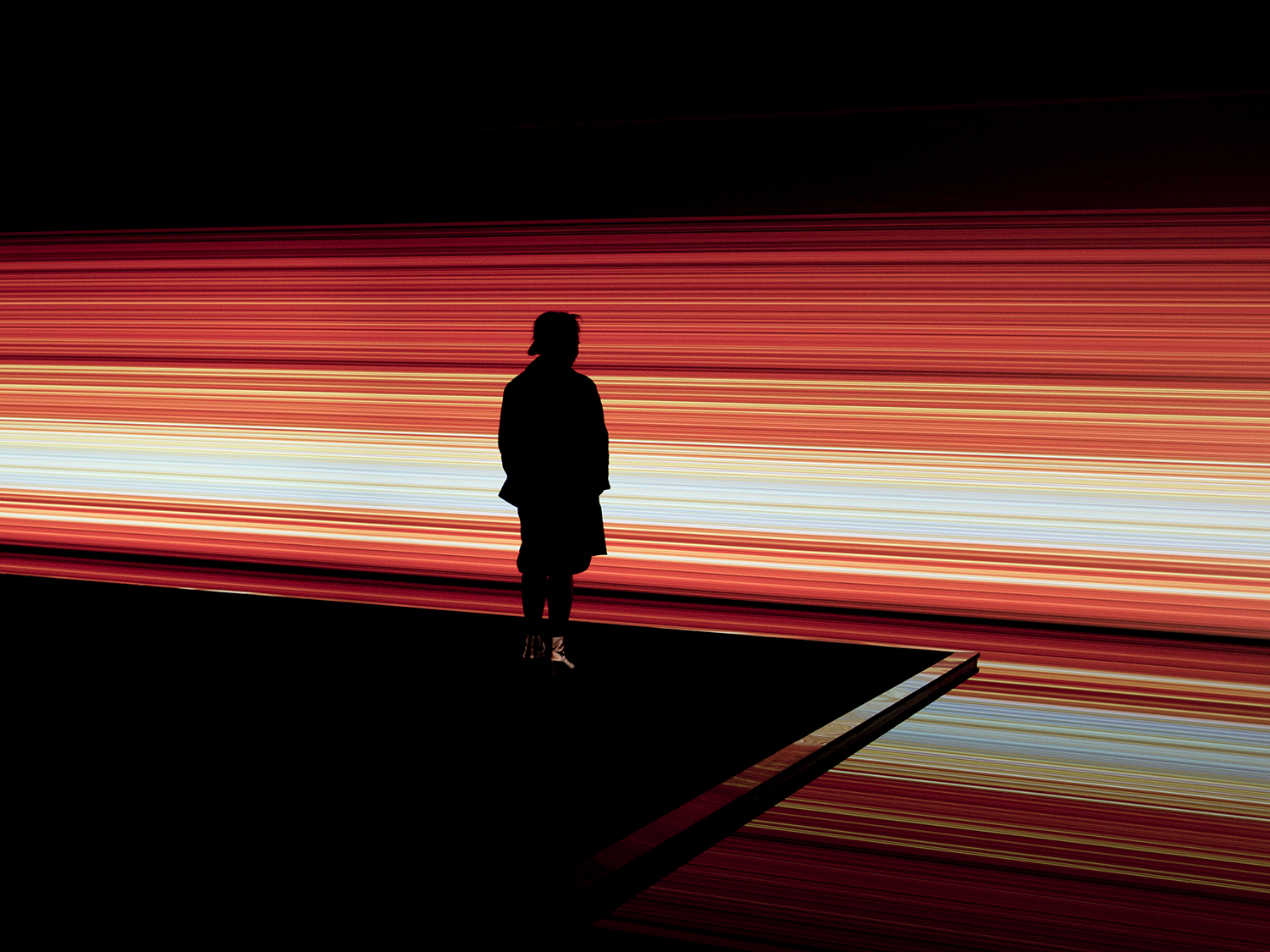
Bernie Krause and United Visual ArtistsThe Great Animal Orchestra. Courtesy Fondation Cartier pour l’art contemporain, Paris, 2016. Photo: Photo © UVA
Now, “The Great Animal Orchestra” has landed on the San Francisco waterfront, at the Exploratorium, an innovative museum melding art and science founded by physicist and educator Frank Oppenheimer in 1969. Oppenheimer and Krause met each other in the ’60s, so the arrival of the show here is particularly meaningful. “We’ve been trying to get it here for so long that it’s just a relief to have it in our backyard,” says Krause, who lives with his wife and partner, Katherine, in nearby Sonoma. “It’s important to convey this material to anybody who can get access to it.”

Installation view of “The Great Animal Orchestra,” Fondation Cartier pour l’art contemporain, Paris, 2016. © Bernie Krause / © UVA. Photo: Photo © Luc Boegly
On view through October 15, the engrossing show features seven soundscapes chosen to represent a diverse cross section of the Earth’s biomes, among them Alaska’s Yukon Delta, the Amazon rainforest in Brazil, and Zimbabwe’s Mungwezi Ranch. (There’s also one entitled Oceans that samples recordings from the Pacific, Caribbean, and Big Sur.) Lasting around ten minutes each, the audio scenes play in a cavernous blacked-out room within the Exploratorium that is populated with a smattering of cushioned stools, allowing visitors a place to settle in.
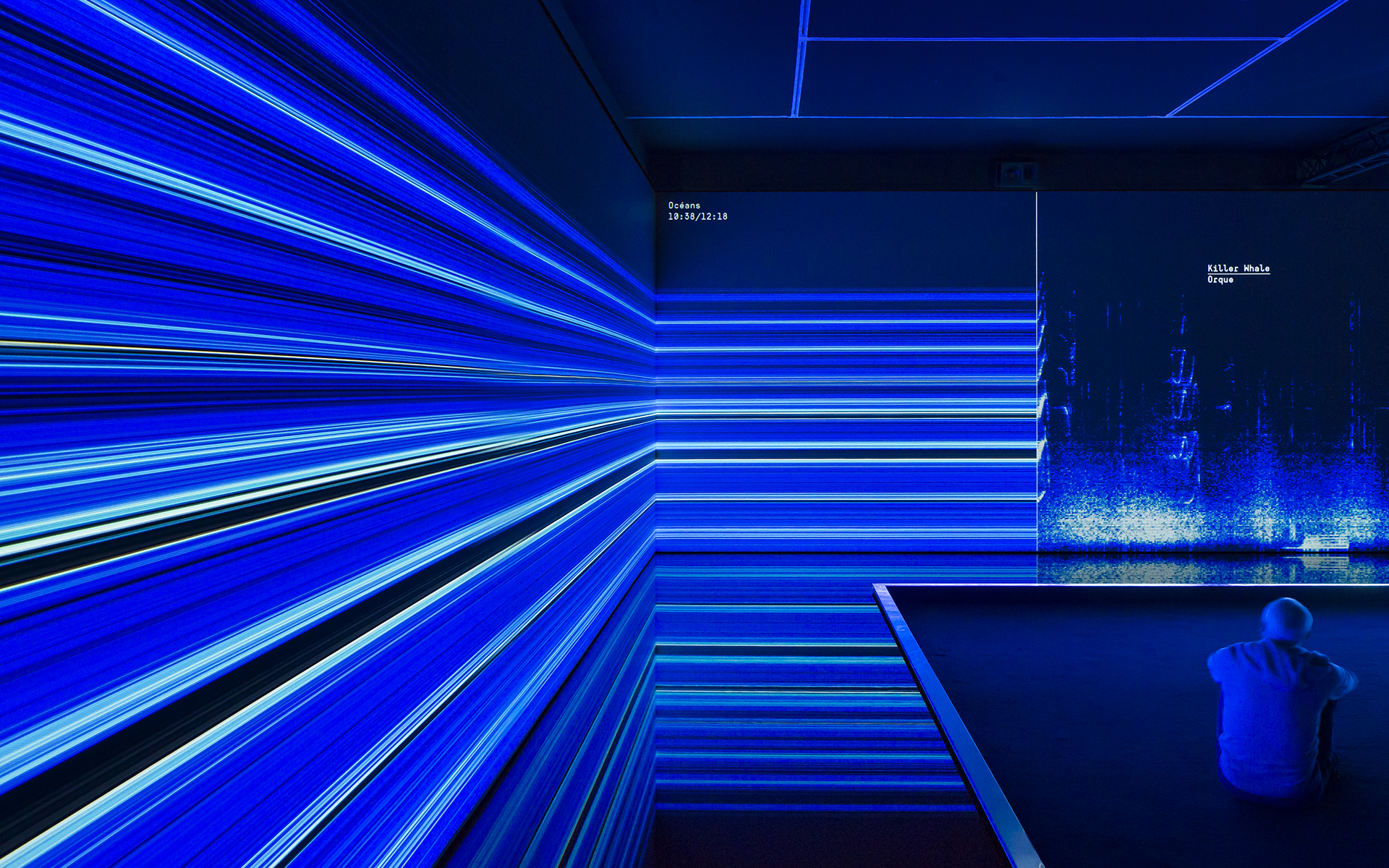
View of the exhibition The Great Animal Orchestra, Fondation Cartier pour l’art contemporain, Paris, 2016. © Bernie Krause / © UVA. Photo: Photo © Luc Boegly
In order to translate the surrounding audio into a visual feast, the team at United Visual Artists devised a spectrogram to be displayed on the walls that changes color with the locales, spiking as red wolves howl, warblers sing, and elephants trumpet. “For me, the visuals are the gateway into the whole exhibition,” says Lindsay Bierman, the Exploratorium’s Sakurako and William Fisher Executive Director and CEO. “It’s like being transported to a completely different world, one that I never really experienced before and didn’t know I was missing.” The visual component is further amplified by a reflecting pool that line the walls, mirroring the spectrogram’s moving lines and graphs while also featuring gentle ripples as the volume goes up and down.
“As I record more and more habitats, I’m realizing that they are disappearing—very fast”
BERNIE KRAUSE
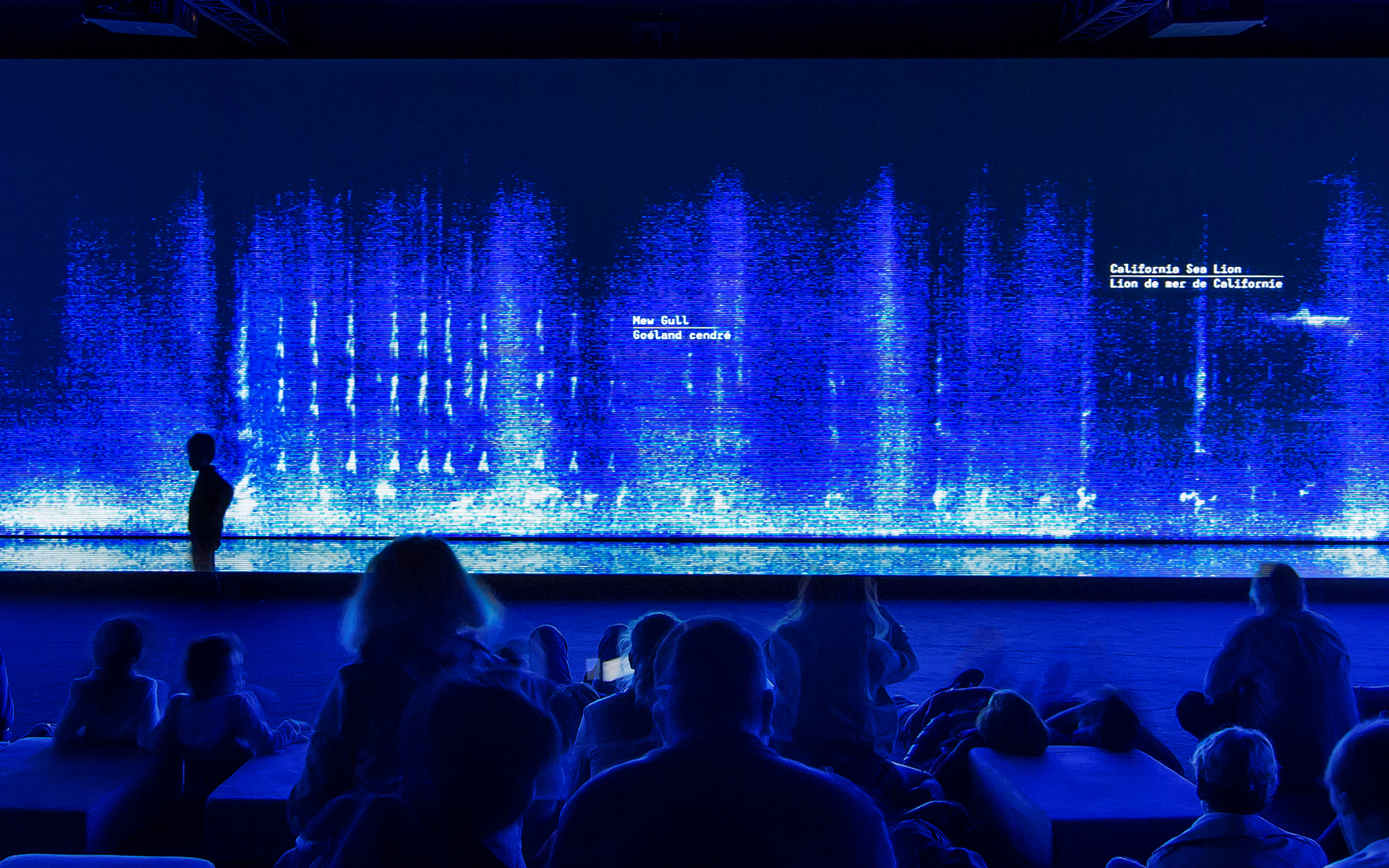
View of the exhibition The Great Animal Orchestra, Fondation Cartier pour l’art contemporain, Paris, 2016. © Bernie Krause / © UVA. Photo: Photo © Luc Boegly
For all of its visual punch, the installation is also a moving environmental plea that highlights the significant loss of biodiversity looming on the horizon. The final soundscape, Before and After, offers a stark warning about the consequences of human intervention in the natural world. Habitats once teeming with the songs of wildlife are rendered almost silent following various industrial activities, like clear-cut logging on Costa Rica’s Osa Peninsula or coral reef destruction in Vanua Leva, Fiji. “As I record more and more habitats, I’m realizing that they are disappearing—very fast,” explains Krause. “The loss of habitat means the loss of creatures and the loss of the sound. It’s warning us about what we’re losing, and what we better do to make a change pretty quickly.”
“The Great Animal Orchestra” is on view at the Exploratorium in San Francisco through October 15, 2023.

